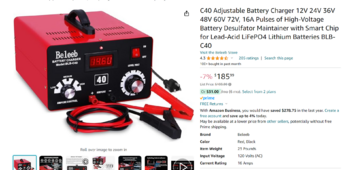novaleaf
New Member
I have a Chargeverter v1, and I like it (Aside from poor documentation).
One thing that none of the various reviews/videos I saw of it mention though, the fans are LOUD. I'm using the chargeverter to trickle charge my trailer from mains and for camping with grid power I either need to add some custom soundproofing, or I need to come up with another solution (like connect something silent via the solar input)
One thing that none of the various reviews/videos I saw of it mention though, the fans are LOUD. I'm using the chargeverter to trickle charge my trailer from mains and for camping with grid power I either need to add some custom soundproofing, or I need to come up with another solution (like connect something silent via the solar input)




